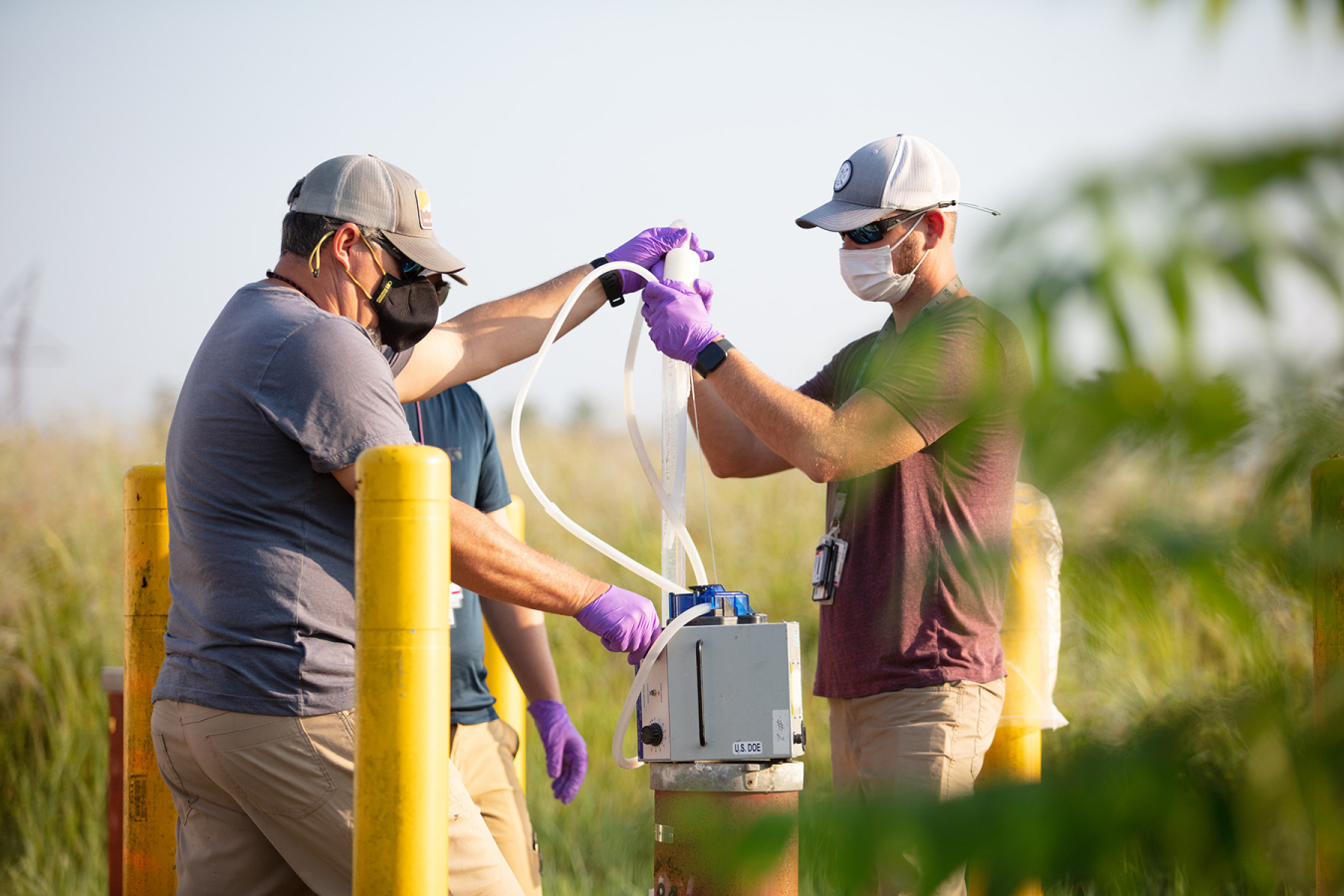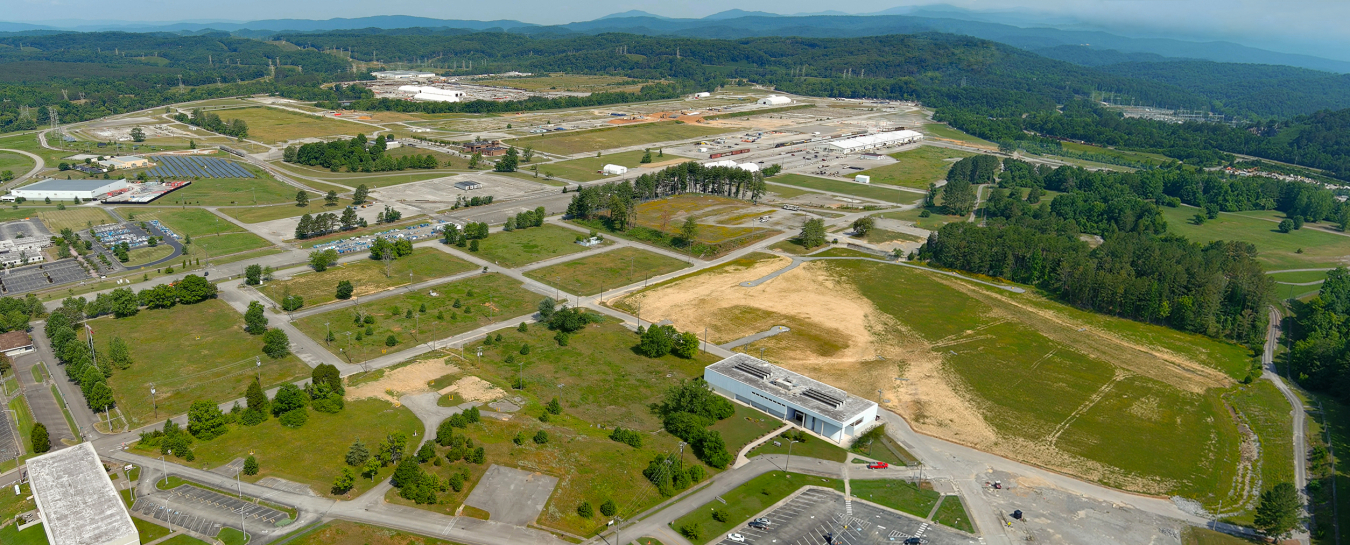The Oak Ridge Office of Environmental Management and contractor UCOR have shifted to soil and groundwater remediation at the East Tennessee Technology Park in the homestretch of a cleanup that took down more than 500 aging, contaminated structures.
Office of Environmental Management
May 2, 2023
Employees take groundwater samples at the East Tennessee Technology Park to understand which areas require further action. The site is divided into three sections for groundwater remediation planning — the Main Plant Area, K-31 and K-33 Area and Zone 1.
OAK RIDGE, Tenn. – The Oak Ridge Office of Environmental Management (OREM) and contractor UCOR have shifted to soil and groundwater remediation at the East Tennessee Technology Park (ETTP) in the homestretch of a cleanup that took down more than 500 aging, contaminated structures.
With crews set to finish excavating and removing contaminated soil from the site next year, the spotlight is turning to groundwater.
“We’ve made great strides in reducing risks and restoring the environment at ETTP,” said OREM Regulatory Specialist Roger Petrie. “As we near completion on the remaining soil cleanup projects, groundwater remediation is the final effort to achieve our mission at the site.”
ETTP is divided into three sections for groundwater remediation planning. One section is the Main Plant Area, which encompasses most of the operations area at the former enrichment complex. Another section is the area where the large K-31 and K-33 uranium enrichment buildings once stood. The third section is called Zone 1, which is the area immediately surrounding the Main Plant and K-31 and K-33 areas.

An aerial view of the East Tennessee Technology Park after demolition was completed on more than 500 old, contaminated buildings. Soil cleanup is scheduled to be complete next year, and planning is underway to determine how the Oak Ridge Office of Environmental Management will remediate groundwater at the site.
Planning took a major step forward recently when the U.S. Environmental Protection Agency and Tennessee Department of Environment and Conservation approved OREM’s proposed plans for addressing groundwater in the Main Plant and K-31 and K-33 areas.
OREM hosted a public meeting last week to discuss the preferred approach for groundwater remediation in the Main Plant Area. The meeting provided an opportunity for attendees to share comments. The public can submit comments on that proposed plan through May 19.
The preferred approach for groundwater remediation in the Main Plant Area is a process called enhanced in situ bioremediation. A widely used technology for treating contaminated waste, it involves injecting microorganisms and a carbon source, such as vegetable oil, into the ground. The microorganisms reduce or detoxify the contaminants.
“Because site conditions differ, no single remediation technology is applicable for all areas at ETTP,” said Kevin Ironside, Environmental Programs and Planning manager with UCOR. “A different approach is being recommended for the K-31 and K-33 area as the most effective means for addressing groundwater remediation.”
For the K-31 and K-33 Area, OREM is proposing a process called monitored natural attenuation along with land use controls. Monitored natural attenuation relies on natural processes that reduce contaminant concentrations in groundwater. Using this process as the remedial action involves monitoring groundwater conditions with land use controls limiting potential exposures.
OREM is hosting a separate public meeting on that topic on May 9, and the public can provide comments on that proposed plan through June 12.
The proposed remedies for Zone 1 and associated public involvement opportunities will be announced later.
Over the past two decades, OREM has transformed the former uranium enrichment complex into a multi-use industrial center, national park and conservation area benefiting the region.
ETTP is home to 25 businesses with more expected in the years ahead. It’s home to an element of the Manhattan Project National Historical Park, and it also has a 3,000-acre conservation area for public use.
To receive the latest news and updates about the Office of Environmental Management, submit your e-mail address.

